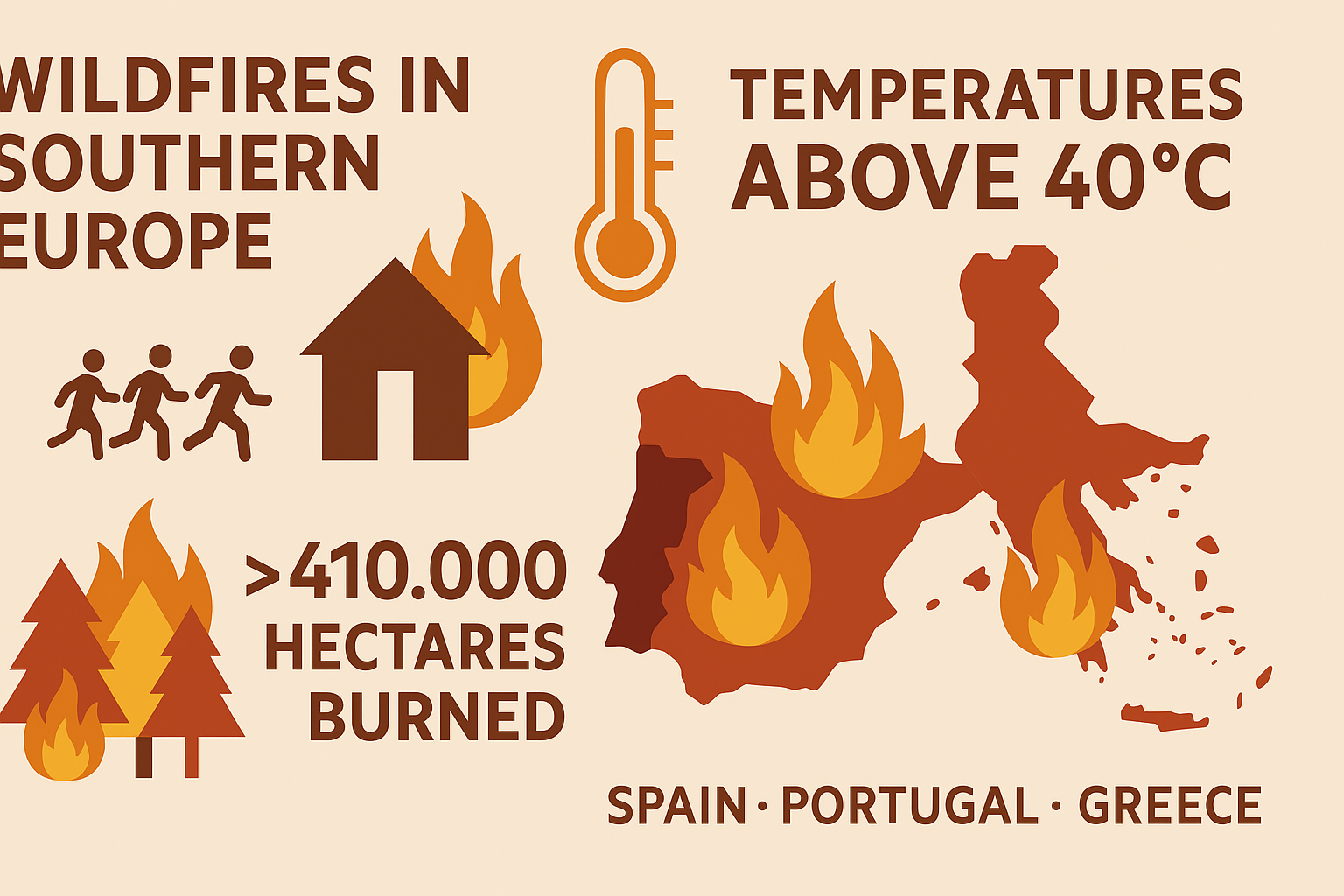Wildfires have advanced dangerously close to several southern European capitals, including Madrid, Athens, and Podgorica, as data reveals a nearly 50% increase in blazes compared with the same period last year.
Escalating Fires Across Europe
Over the past week, firefighters in Spain, Portugal, France, Turkey, Greece, and Montenegro have battled widespread blazes, fueled by soaring temperatures exceeding 40°C. Authorities across the region have issued repeated warnings as the fires stretch national capabilities.
The European Union’s civil protection mechanism — a shared firefighting resource for member states — has already been activated 16 times this year, matching the total for the whole of 2024. Spain called on the programme for the first time ever, prompting France to dispatch two firefighting planes. Bulgaria, Albania, Montenegro, Greece, and Portugal also requested support. Sweden, Romania, and Slovakia have contributed helicopters and firefighting crews.
Strain on National Resources
Despite these efforts, larger European countries are struggling to cope with the increasing frequency and intensity of fires linked to climate change. Portugal’s internal affairs minister, Maria Lúcia Amaral, acknowledged the difficulty: “Spain has never failed us, and at this moment Spain has said, ‘don’t count on us because we can’t do it.’”
Agencies warn that fire risks remain particularly severe across the Iberian peninsula, southern France, Slovenia, Hungary, Greece, Romania, Bulgaria, and the Balkans. Thousands of residents and tourists have been evacuated from affected regions, including Greece’s Peloponnese, Zakynthos, and Kefalonia.
Climate Change Intensifying Risks
Scientists emphasize that extreme weather is exacerbating the crisis. Akshay Deoras, a research scientist at the UK’s National Centre for Atmospheric Science, explained: “Heatwaves are becoming more intense and frequent due to climate change, which means climate change is directly fuelling wildfires. Extended hot and dry conditions are turning landscapes into tinderboxes.”
The European Forest Fire Information System reports that more than 410,000 hectares have burned so far in 2025, compared with under 189,000 hectares last year. The number of recorded fires has risen to 1,600, from about 1,090 in the same period of 2024.
Spain at the Epicenter
Spain is among the hardest-hit countries, with temperatures forecast to remain above 40°C across large parts of the country. On Friday, authorities reported 14 high-risk active fires, with strong winds worsening the situation. Prime Minister Pedro Sánchez warned of “an extreme risk of new fires.”
Tragedy has also struck. Three people have died in Spain this week, including two volunteer firefighters in Castile and León. A third victim perished after a fire broke out on the outskirts of Madrid. Infrastructure and heritage have been affected, with the Madrid-Galicia train line repeatedly disrupted and Las Médulas, a UNESCO World Heritage site, suffering damage.
Justice minister Félix Bolaños highlighted the growing challenge: “Climate change is making extreme temperatures an obvious risk for fires in our country, which are becoming increasingly devastating and difficult to fight.”
Global Impact
Europe’s struggle with wildfires mirrors challenges across the northern hemisphere. In Canada, officials report more than 470 fires classified as “out of control,” while California has seen thousands evacuated in the past week.
July 2025 was the third-warmest July on record globally, surpassed only by 2023 and 2024. Europe, scientists warn, is warming faster than the global average, placing the continent at the forefront of the wildfire crisis.








